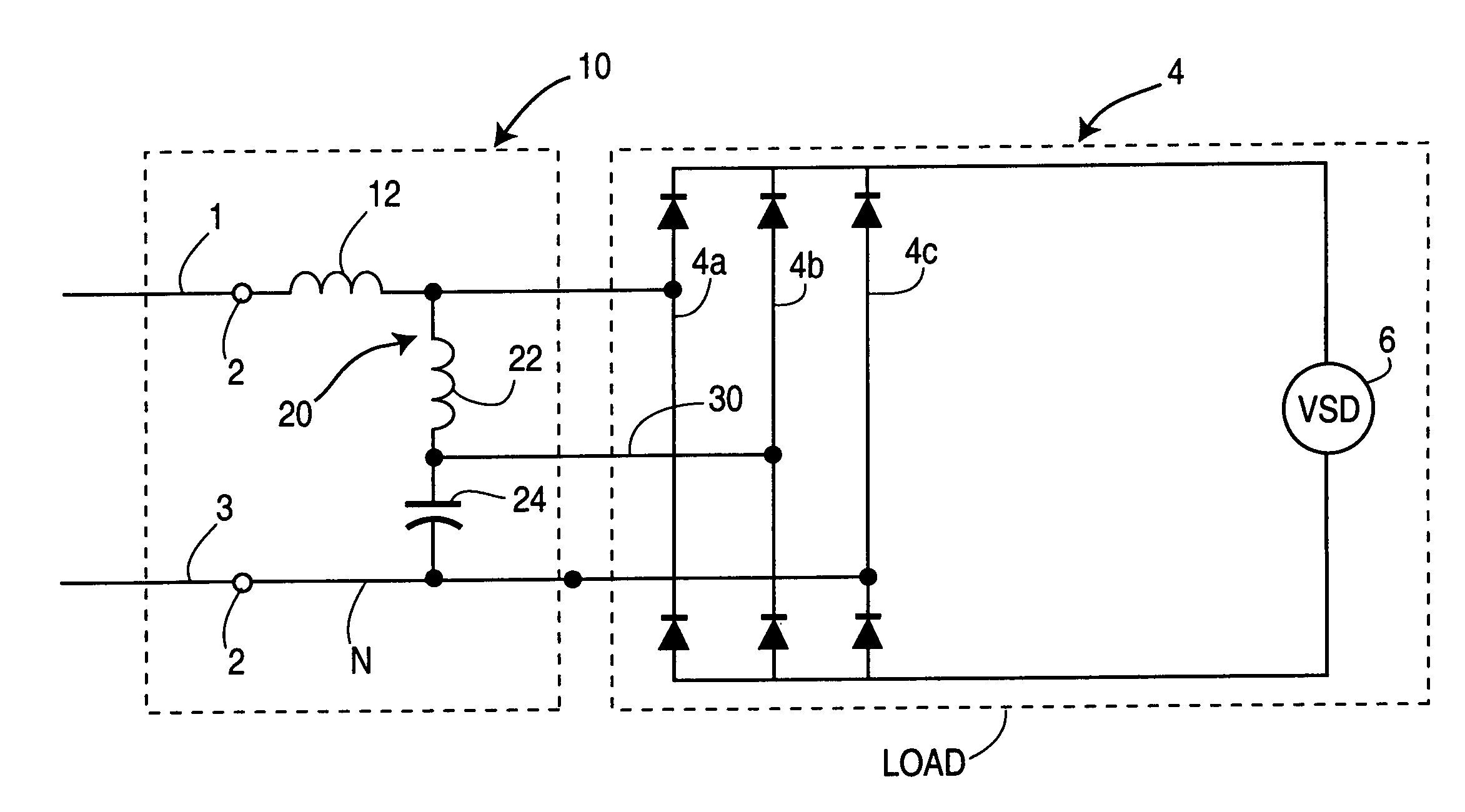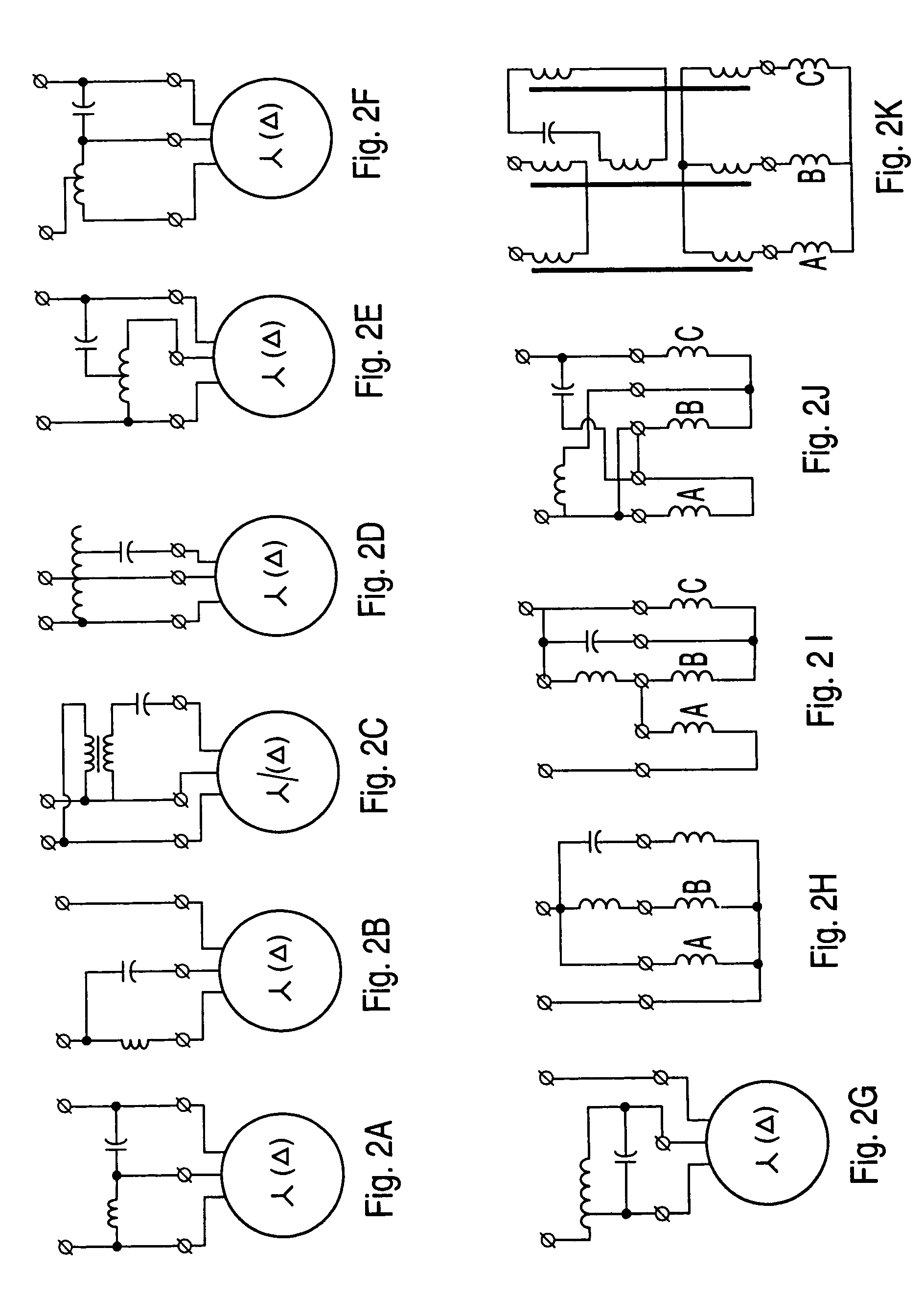Combined harmonic filter and phase converter or phase shifting device
a phase converter and harmonic filter technology, applied in the direction of reactive power adjustment/elimination/compensation, ac network to reduce harmonics/ripples, emergency protective arrangements for limiting excess voltage/current, etc., can solve the problem of reducing the electromagnetic compatibility of loads, consuming substantially higher current, and substantially higher dc bus voltage ripple level
- Summary
- Abstract
- Description
- Claims
- Application Information
AI Technical Summary
Benefits of technology
Problems solved by technology
Method used
Image
Examples
Embodiment Construction
[0049]A preferred embodiment of the invention for use in a three-phase power distribution system is illustrated in FIG. 6. Terminals 2a, 2b, 2c connect the device 10 to the lines 1a, 1b, 1c transmitting the three phases of the power supply. The power distribution system (not shown) may be any three-phase alternating current system, and the load 4 may comprise one or more harmonic generating loads, for example a variable speed drive (VSD) 6 with a bridge rectifier 8 for converting the alternating current to a direct current for driving the VSD 6. The rectifier bridges may be connected in parallel or in series. The DC output of each bridge may be provided with reactors to equalize the current distribution between the bridges, as is conventional.
[0050]Each line winding 12a, 12b, 12c comprises a first end connected to a first line, i.e. one phase of the power distribution system, and a second end connected to one phase 4a, 4b or 4c of the load 4. Each line winding 12a, 12b, 12c comprise...
PUM
 Login to View More
Login to View More Abstract
Description
Claims
Application Information
 Login to View More
Login to View More - R&D
- Intellectual Property
- Life Sciences
- Materials
- Tech Scout
- Unparalleled Data Quality
- Higher Quality Content
- 60% Fewer Hallucinations
Browse by: Latest US Patents, China's latest patents, Technical Efficacy Thesaurus, Application Domain, Technology Topic, Popular Technical Reports.
© 2025 PatSnap. All rights reserved.Legal|Privacy policy|Modern Slavery Act Transparency Statement|Sitemap|About US| Contact US: help@patsnap.com



